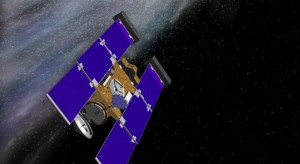PASADENA, Calif., (NASA) — NASA scientists have discovered glycine, a fundamental building block of life, in samples of comet Wild 2 returned by NASA's Stardust spacecraft.
"Glycine is an amino acid used by living organisms to make proteins, and this is the first time an amino acid has been found in a comet," said Jamie Elsila of NASA's Goddard Space Flight Center in Greenbelt, Md. "Our discovery supports the theory that some of life's ingredients formed in space and were delivered to Earth long ago by meteorite and comet impacts."
Elsila is the lead author of a paper on this research accepted for publication in the journal Meteoritics and Planetary Science. The research was presented during the meeting of the American Chemical Society at the Marriott Metro Center in Washington, D.C., August 16.
"The discovery of glycine in a comet supports the idea that the fundamental building blocks of life are prevalent in space, and strengthens the argument that life in the universe may be common rather than rare," said Carl Pilcher, director of the NASA Astrobiology Institute, which co-funded the research.
Proteins are the workhorse molecules of life, used in everything from structures like hair to enzymes, the catalysts that speed up or regulate chemical reactions. Just as the 26 letters of the alphabet are arranged in limitless combinations to make words, life uses 20 different amino acids in a huge variety of arrangements to build millions of different proteins.
Stardust passed through dense gas and dust surrounding the icy nucleus of Wild 2 (pronounced "Vilt-2″) on Jan. 2, 2004. As the spacecraft flew through this material, a special collection grid filled with aerogel – a novel sponge-like material that's more than 99 percent empty space – gently captured samples of the comet's gas and dust. The grid was stowed in a capsule that detached from the spacecraft and parachuted to Earth on Jan. 15, 2006. Since then, scientists around the world have been busy analyzing the samples to learn the secrets of comet formation and our solar system's history.









No comments:
Post a Comment